Easy Table of Contents Plugin
This plugin allows you to create a table of contents (TOC) for pages and posts on your OpenLab site. Visitors to your site can click a link in the TOC, which allows them to jump down to that section on the page. Adding a TOC to a page can be especially useful for lengthy pages, such as a syllabus.
1. Activate Easy Table of Contents under Plugins in the left-hand menu of your Dashboard.
2. If your page is not already divided into sections, think about how you want to organize the content into different sections. Give each section or sub-section a title on its own line. The separate line will allow you to turn your section titles into heading blocks. To create a heading, click on the line with your section title, then click on the Transform Block dropdown menu that currently displays a Paragraph symbol (¶) and select Heading.
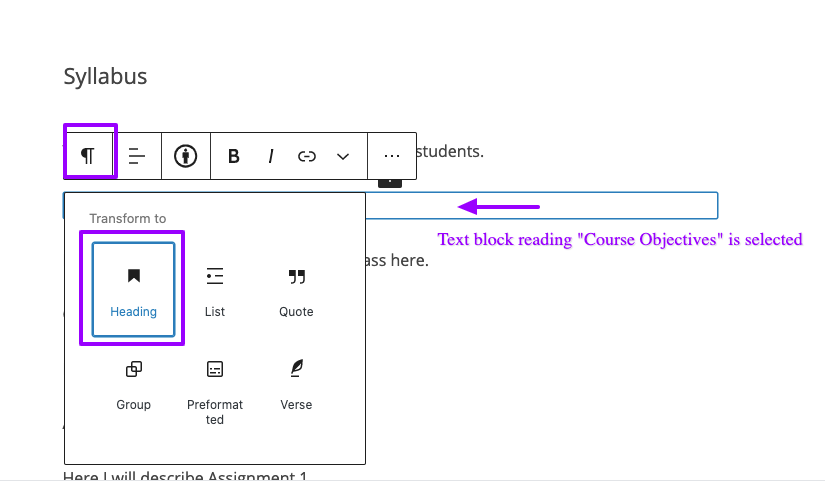
3. Now that you have transformed your section title into a heading block, it’s time to choose a heading type. Next to the Transform Block button (which will now display a flag symbol), click on the Heading menu, which will default to H2. Headings are hierarchical, with Heading 1 the largest and Heading 6 the smallest. You can choose any heading you like; however, the best practice is that they should appear in logical order, with just a single Heading 1 on any page.
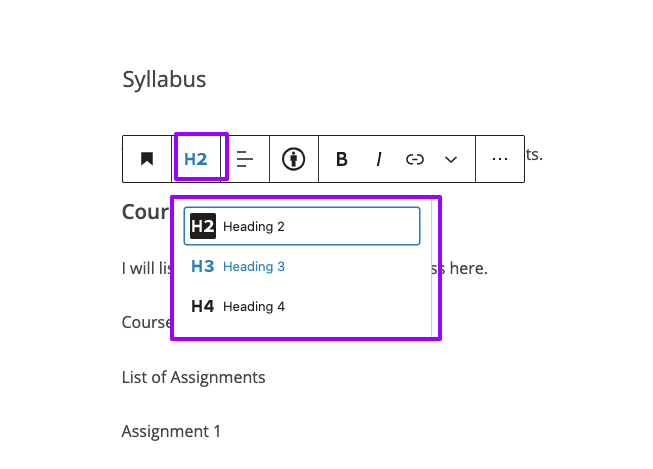
4. Once you’ve organized your headings, scroll down beneath the page editor to find the Table of Contents options. Choose the option to Insert table of contents— you don’t need to adjust the other settings unless you want to. Click Update (or Publish if it’s a new page) to save your changes.
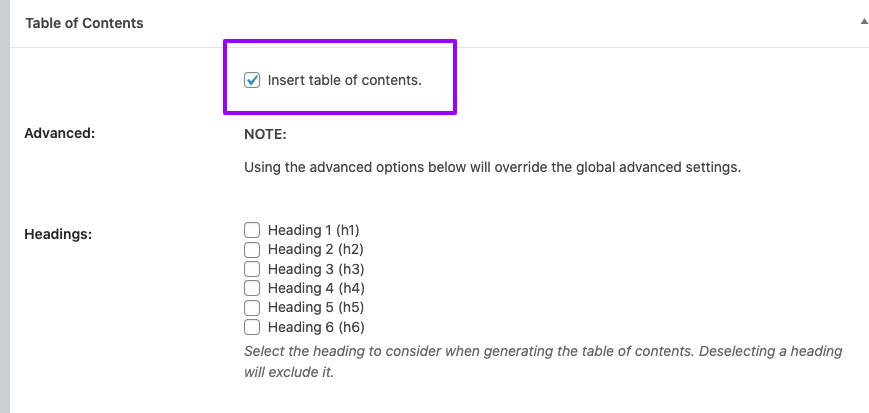
5. You won’t see a table of contents when viewing your page content in the Dashboard editor, but when you view the page on your site, you will see the TOC appear. If you don’t see a TOC, that means you have fewer than four headings on your page. By default, the TOC plugin is set to appear when there are four or more headings on a page. You can either add additional headings (if that makes sense given the content on your page) or change the plugin settings to appear when there are fewer than four headings. Plugin settings are described below.
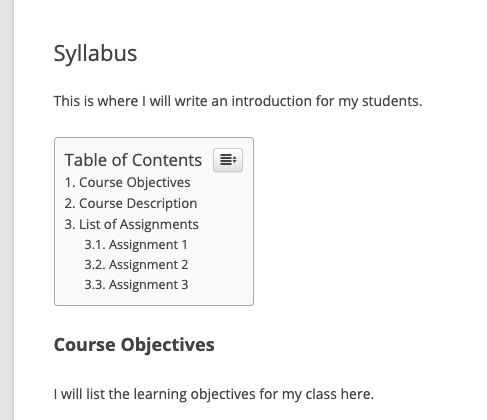
Easy Table of Contents Settings
1. To change the plugin settings, go to Dashboard > Settings > Table of Contents. To change the number of headings required for the TOC to appear on a page, change the number in the dropdown for Show when 4 or more headings are present.
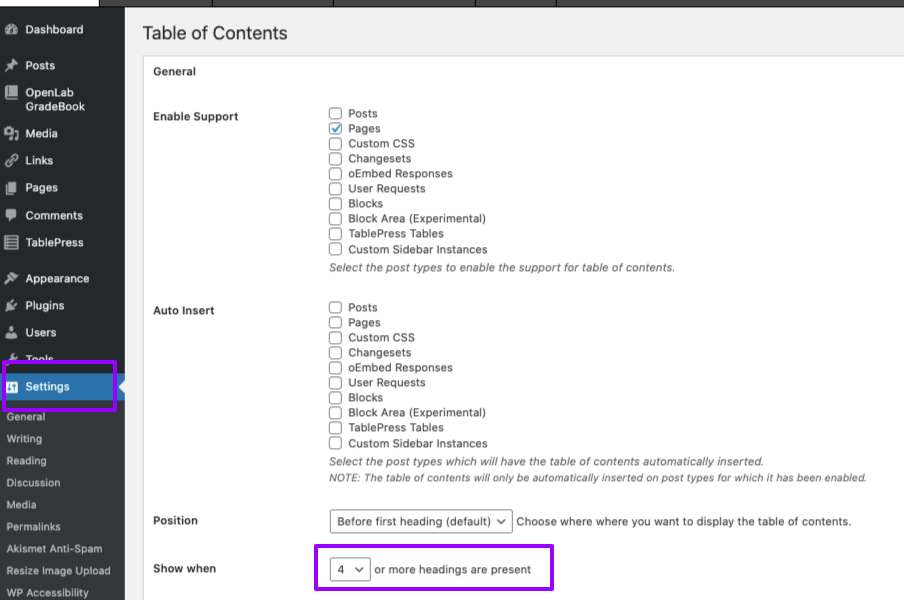
2. Some of the other settings that may be relevant are:
- General
- Enable Support: By default, a TOC will appear on pages, but you can include posts and other special post types.
- Auto Insert: You can automatically insert a TOC on pages or posts, meaning you won’t need to click Insert table of contents on individual pages.
- Position: changes where the TOC appears on the page. The default “Before first heading” probably makes sense for most cases, but it can be changed.
- Display Header Label and Header Label: The default header label is “Table of Contents” but you can choose whether to display a label at all, or can change the text of the label displayed.
- Toggle View: allows site visitors to choose whether to expand or hide the TOC contents.
- Initial View: determines whether the TOC is minimized by default, with the option for site visitors to expand.
- Show as Hierarchy: The hierarchy option means that subheadings will be nested under parent headings, but you can choose a non-hierarchical display.
- Counter: determines how headings are numbered in the TOC.
- Appearance
- The TOC will automatically choose your theme’s styles, but you can choose many of these elements, such as the width, font size, background color, border color, etc.
- The TOC will automatically choose your theme’s styles, but you can choose many of these elements, such as the width, font size, background color, border color, etc.
- Advanced: There are a number of advanced options; a few of the most commonly used include:
- Homepage: By default, a TOC will not appear on the homepage, but if you are using a static page for your homepage, you may want a TOC to appear. If so, you will need to choose this option.
- Headings: allows you to choose which types of headings (e.g. Heading 1, Heading 2, etc) are used to create the TOC. All headings are included by default, but uncheck a heading to exclude it. These settings are global for all pages, but you can also choose to exclude headings on individual pages.
- Exclude Headings: allows you to exclude headings that contain specific words. For example, if you want to include all Heading 2, except if they contain the word “elephants.” This can also be done on individual pages.
Widget
You can add a TOC widget to your sidebar that will display the TOC for the page you are currently viewing. You can also make it “sticky,” meaning that it remains with you in the same place as you scroll down the page. As you scroll, or jump to different sections, the current section you are in is highlighted in the widget. It will show the appropriate TOC for the page you are viewing.
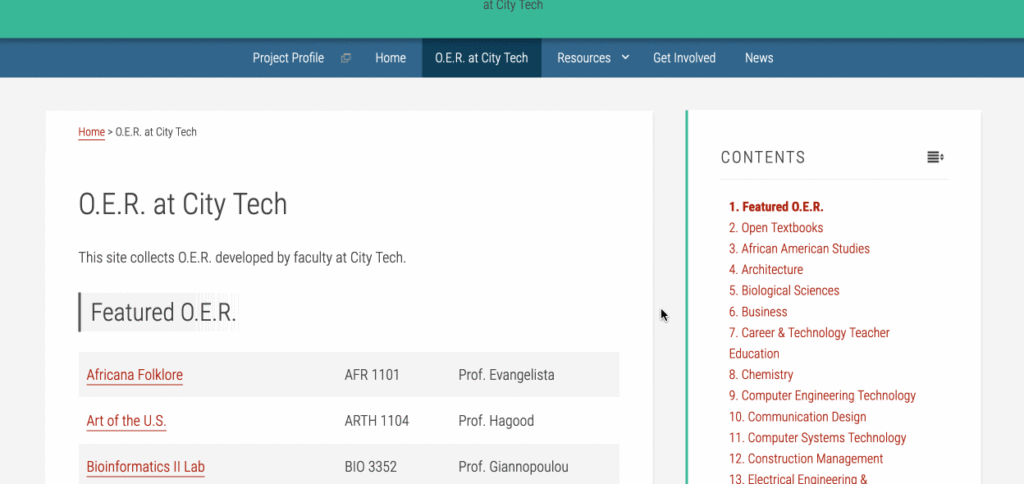
1. Add the widget by going to Dashboard > Appearance > Widgets, and clicking on Table of Contents. Choose the sidebar where you want the widget to appear, and click Add Widget.
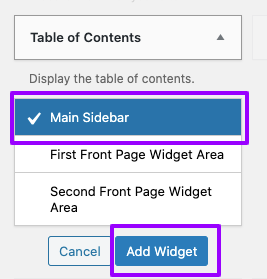
2. You can choose a title for the widget, and if you want it to be “sticky,” check the box next to “Affix or pin the widget.” Click Save when you’re done.
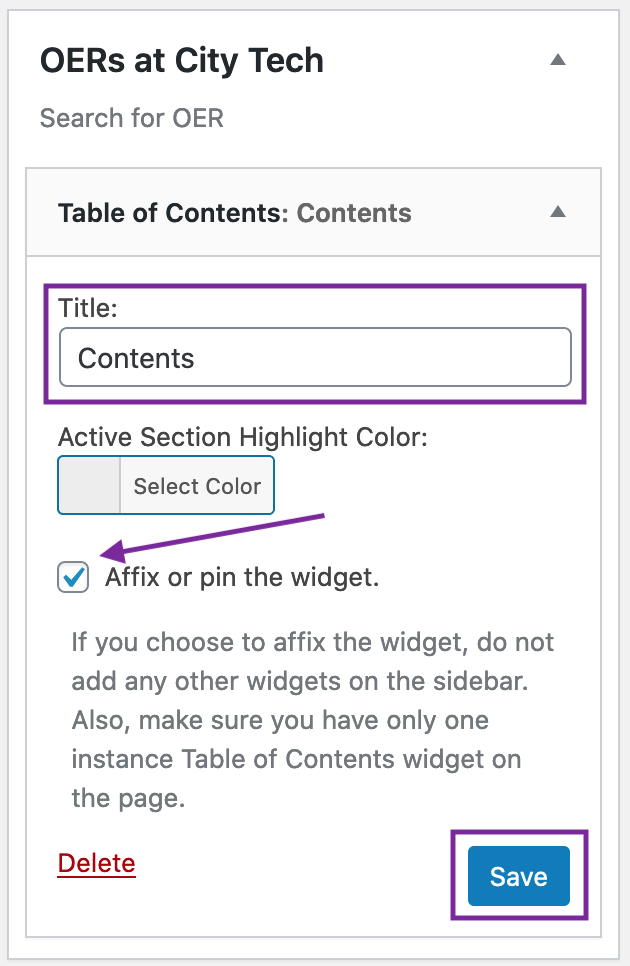
Looking for Classic Editor help? You can find it here: Easy Table of Contents Plugin (Classic)









